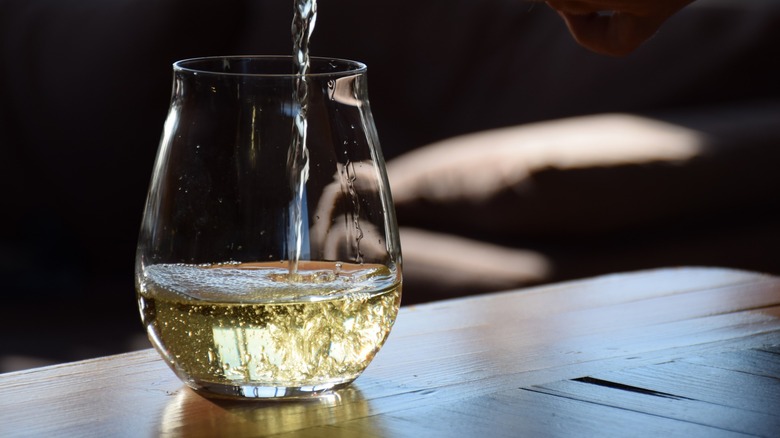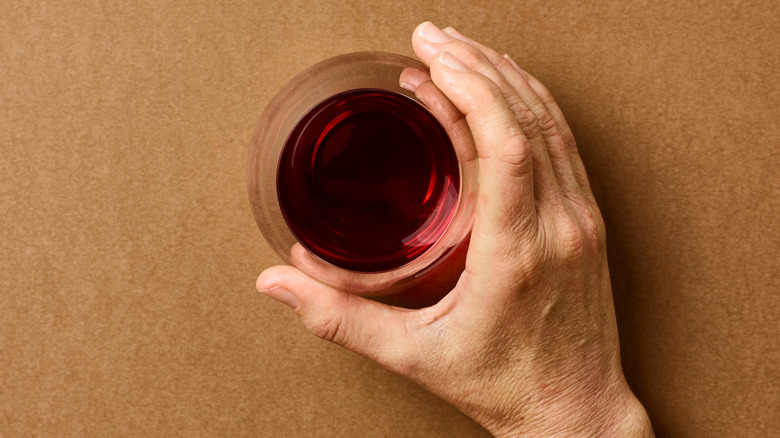Does Wine Taste Different Out Of A Stemless Glass?
Stemless wine glasses have emerged as a popular trend over the past 10 to 20 years, and it's no mystery why. It's all about accessibility and versatility. Stemless wine glasses (aka tumblers) are less likely to tip over and spill or break thanks to their lower center of gravity. Admittedly, they're also tougher to gesture with fabulously during conversations. But they do make wine-drinking more democratic and possible in a variety of settings (pool parties, porches, beaches, park picnics, tailgates), removing some of the inherent stuffiness that some gatekeep-y sommeliers have connotatively linked to vino. You can even drink wine out of a mason jar if that's your style. The only rules are the ones you place there yourself.
Stemmed or stemless, the bowl shape of the wine glass is largely the same, which is arguably the most important characteristic of a drinking receptacle. On a scientific level, ethanol vapors carry aromatic compounds from your wine to your olfactory system, largely shaping the overall taste and experience of a given wine. The density and position of these ethanol vapors are hugely impacted by the shapes of different vessels. It's why Cabernet Franc and Alicante Bouschet are served in tulip-shaped Bordeaux glasses while orange wines perform better in wide-mouthed Montrachet glasses. Still, even though stemless is more durable and accessible, in terms of being the "right tool for the job" for sipping your wine at peak performance, stemmed is still the way to go.
Mind the temperature of your wine glass
In addition to looking fancy, stems serve a crucial utilitarian purpose. They allow for swirling space and aeration, which opens up the profile and keeps the wine from becoming stagnant or dull. Stems are also important for enjoying particularly complex (and often pricier) wines at the optimal temperature. Temperature dramatically impacts a wine's taste. It mutes or emphasizes aromatics, showcases structure, highlights or dulls tannins, and primes the nose and taste buds to be able to detect certain flavors.
Proper temperature is especially important when drinking chilled white wines, which tend to grow unpleasantly flat and lose their freshness if served too warm. Lukewarm reds might be able to withstand the transferred heat from your hand, and a little body heat can actually help chilled light reds release their full flavor. But don't be surprised to find your Riesling sweaty and flat after 20 minutes in your stemless grip. In general, white wine and rosé should be served at 45 to 55 degrees Fahrenheit, orange and light-bodied reds at 55 to 60 degrees, and medium and full-bodied reds at 60 to 65 degrees.
Still, tumblers are a happy medium between a plastic red solo cup and a long-stemmed crystal glass. Your stemless glass is certainly more durable but forget about smelling the secondary aromas in your aged tawny port. Ultimately, "to stem" or "not to stem" might just be a matter of personal preference — and the quality of wine you're serving. But allow us to leave you with the following modern proverb: Stemmed is better than stemless, but wine is better than no wine.

